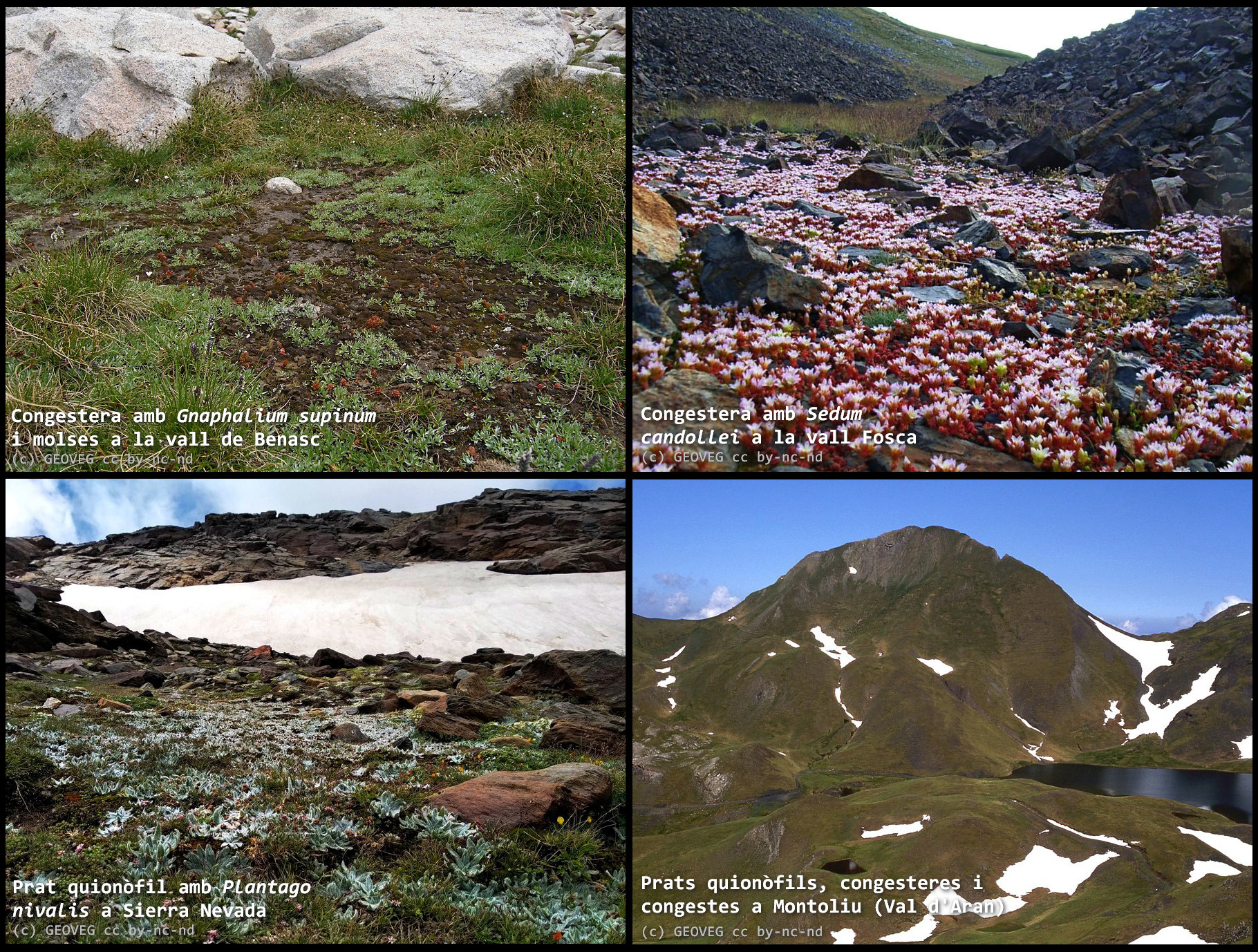Vegetation on the edge: coexisting with snow in southern European mountains
Snow-related vegetation
In southern European mountains, climate change is causing not only alterations in temperature and precipitation regimes, but also changes in snow cover duration and snowfall dynamics. In these areas, an earlier snowmelt date may have a major impact on some high mountain ecosystems, and especially on snowbed vegetation.
Snowbeds are those places in high mountains where snow melts later, already in early- to mid-summer. They are generally of reduced dimensions, and are scattered throughout the high mountain landscape. They host a set of particular species, glacial relicts from colder periods, that find refuge there. These species, highly dependent on the duration of the snow cover, are therefore very sensitive to the higher temperatures and earlier melting caused by climate change. Coexisting with snowbed vegetation, but in areas with a longer growing season length and with a wider distribution within high mountains, we find long snow-covered alpine grasslands (or chionophilous grasslands). In a near future, plants characteristic from these grasslands may be able to colonize the strictly snow-covered areas, due to the new climatic conditions expected.
A study led by Dr. Estela Illa, from the GEOVEG research group and also a researcher at IRBio, has analysed the total species richness and snowbed specialist species richness in the different vegetation groups related to a long snow cover duration, and in the different Iberian high mountain regions, and has analyzed which of these groups represent, currently and in the near future, a refuge for snowbed specialist plants.
In order to know which groups of chionophilous vegetation (dependent on a long snow cover duration) are present in the Iberian Peninsula, all the Iberian relevés assigned to the different vegetal associations of snowbeds and chionophilous grasslands published in the SIVIM database (http://www.sivim.info/sivi/) were compiled, and some hundreds of unpublished relevés were also added to the dataset. All of them were accurately georeferenced, and several climatic variables were obtained from digital climatic atlases. Non-hierarchical grouping techniques were applied to the 1002 relevés obtained in order to group them considering their floristic similarity. For each of the resulting vegetation groups, and also for each of the biogeographic regions considered (Eastern, Central and Western Pyrenees, Cantabrian Range, Central System and Sierra Nevada), species richness was analyzed as a function of sampling effort, both for the total set of species and for the snowbed specialists.
The future of snowbed species in the Iberian Peninsula
The results obtained indicated that, at present, a set of snowbed specialiss is also found in Cantabrian and, especially, in Pyrenean chionophilous grasslands. Consequently, in a hypothetical context of disappearance of snowbeds in the Iberian high mountains, it is likely that some specialists of these particular environments may coexist, at least for some time, with alpine grassland species.
On the other hand, snowbed specialists are highly threatened in central and southern Iberian mountains, where they are scarce and live only in the few snowbed habitats still present, as southern Iberian chionophilous grasslands, under the current and the predicted climatic conditions, do not offer refuge to them.
Link to the publication: https://doi.org/10.1111/avsc.12701
